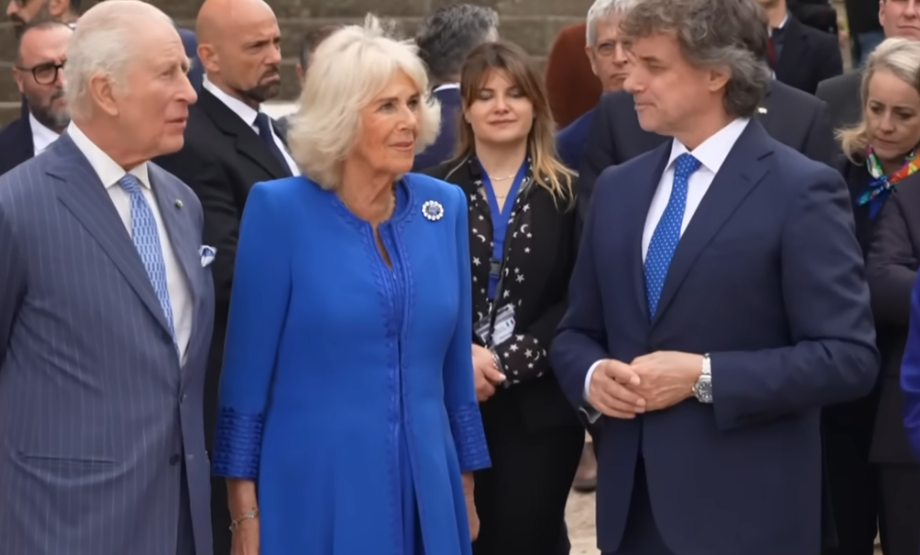Prince Charles and Camilla Parker Bowles rewrote centuries of royal tradition on a dreary April morning in 2005 with a ceremony that was profoundly personal but neither glitzy nor opulent. In addition to being a legal union, it signaled a cultural change that would ultimately reshape how people view royalty in a time when people are prioritizing authenticity over showmanship. Their small-scale but highly symbolic wedding at Windsor Guildhall came after decades of conflict, tabloid scandal, and emotional rebalancing in the public and family.
The ceremony was surprisingly low-key by royal standards, with only 28 guests in attendance, the majority of whom were close friends and family. A particularly creative balancing act between tradition and modern sensibility was marked by the civil service, which was followed by a religious blessing at St. George’s Chapel. It made it possible for a once-vilified couple to move forward in their lives, respectfully incorporating their past into a new story of forgiveness, grace, and salvation.
Charles and Camilla Wedding Overview
| Attribute | Details |
|---|---|
| Wedding Date | 9 April 2005 |
| Ceremony Type | Civil ceremony at Windsor Guildhall |
| Blessing Location | St George’s Chapel, Windsor Castle |
| Bride’s Title at Marriage | Camilla Parker Bowles |
| Post-Marriage Titles | Duchess of Cornwall (now Queen Camilla) |
| Groom’s Title at Marriage | Prince of Wales (now King Charles III) |
| Wedding Outfit (Bride) | Anna Valentine ensemble with Philip Treacy headpiece |
| Royal Attendees | Queen Elizabeth II (at the blessing), Princes William and Harry, senior royals |
| Notable Absence | Queen Elizabeth did not attend the civil service |
| Reference Source | Wikipedia – Charles and Camilla Wedding |
The Charles-Camilla marriage was particularly successful in loosening deeply held beliefs in the context of royal image-making. The intruder, the shadow behind the curtain of the tragic Charles-Diana story, had been Camilla’s portrayal for decades. Public opinion was still split by 2005, but many people were persuaded to change their minds by the wedding’s careful portrayal as modest and respectable. Her journey from national outcast to Queen Consort eventually turned into an incredibly successful rehabilitation case study.

A subtle yet significant factor in that change was fashion. In a gesture that was both sentimental and symbolically sustainable, Queen Camilla wore the same Anna Valentine coat she wore on her wedding day when she went out in Italy in 2025 to celebrate their 20th anniversary. Her choice of clothing struck a deep chord in recent years as environmental consciousness has permeated even royal wardrobes. Camilla’s habitual repurposing of clothing demonstrates a common philosophy of mindful elegance, much like King Charles, who has famously worn the same camel coat for more than 30 years.
Perhaps not in the ostentatious sense of Kate Middleton’s Alexander McQueen outfits or Diana’s revenge dress, but rather because it symbolizes continuity, that coat has since become iconic. It has taken on a multi-layered significance since it was first worn on a day of silent victory and then again twenty years later. It’s more than just apparel; it’s a narrative stitch that expertly weaves past choices into the present.
Similar tales can be found in the Queen’s accessories. Her father gave her a platinum and diamond stick insect brooch in 2005, which further deepens the emotional bond between them. The brooch was famously concealed in an Easter egg from Charbonnel et Walker, a remarkably whimsical gesture from a woman whose public persona rarely leaned playful. It was designed by jeweler Geoffrey Munn and was inspired by her family’s pet insect, “Sticky.” The story, which is both intensely personal and a little ridiculous, emphasizes how deeply sentimental these seemingly insignificant objects can be when they are rooted in memory.
Camilla has consistently defied expectations over the past 20 years in ways that are frequently subtle but noticeably significant. She has created a distinctively contemporary portrayal of royalty that is relatable yet still respectable, from repurposing clothing from a decade ago to supporting charitable causes with a less theatrical flair. Her carefully chosen and extensively repurposed wardrobe has come to represent the couple’s journey visually: incredibly resilient, subtly elegant, and slightly out of the ordinary.
The union’s importance in public discourse has only increased. Over time, the marriage that initially caused unease has evolved into a representation of tenacity. Charles and Camilla now stand for emotional stability and maturity, whereas Charles and Diana once stood for glitz and heartache. Their story demonstrates that enduring connections can come subtly but eventually become more noticeable in a society that is constantly enthralled by viral moments and aesthetic perfection.
The wedding also changed what people expected from a royal ceremony. It demonstrated that significance doesn’t always require grandeur. In addition to acknowledging the shifting values of their time, the couple quietly promoted more flexibility within the institution by choosing a civil service, which was a first for a British heir. A significantly better approach to monarchy—one that incorporates second chances—was made possible by that decision, which was made with considerable guidance and not without opposition.
Instead of using pageantry, their actions throughout their marriage show that their values align. Their public lives exhibit a sort of subtle synergy, from supporting low-key charities to dressing sustainably. It is based on mutual understanding and personal growth rather than performative unity. While that type of collaboration might not have the drama that used to make royal headlines, it does have something much more potent: authenticity.
Their union is largely responsible for the change in society around royal protocol and remarriage. A divorced woman, especially one involved in a scandal, would not have been welcomed at court, much less crowned Queen, in earlier generations. However, in 2023, Camilla was formally crowned Queen Consort; her title was later abbreviated to just Queen Camilla, demonstrating the advancement of public opinion.
In 2025, the anniversary festivities focused more on legacy than spectacle. Their ongoing prominence feels especially reassuring because Camilla is subtly forming her role alongside Charles, who is navigating kingship in his later years. In times of uncertainty, it provides comfort. Their common path, which is based on tenacity and flexibility, provides a nuanced model for changing institutions without sacrificing legacy.


